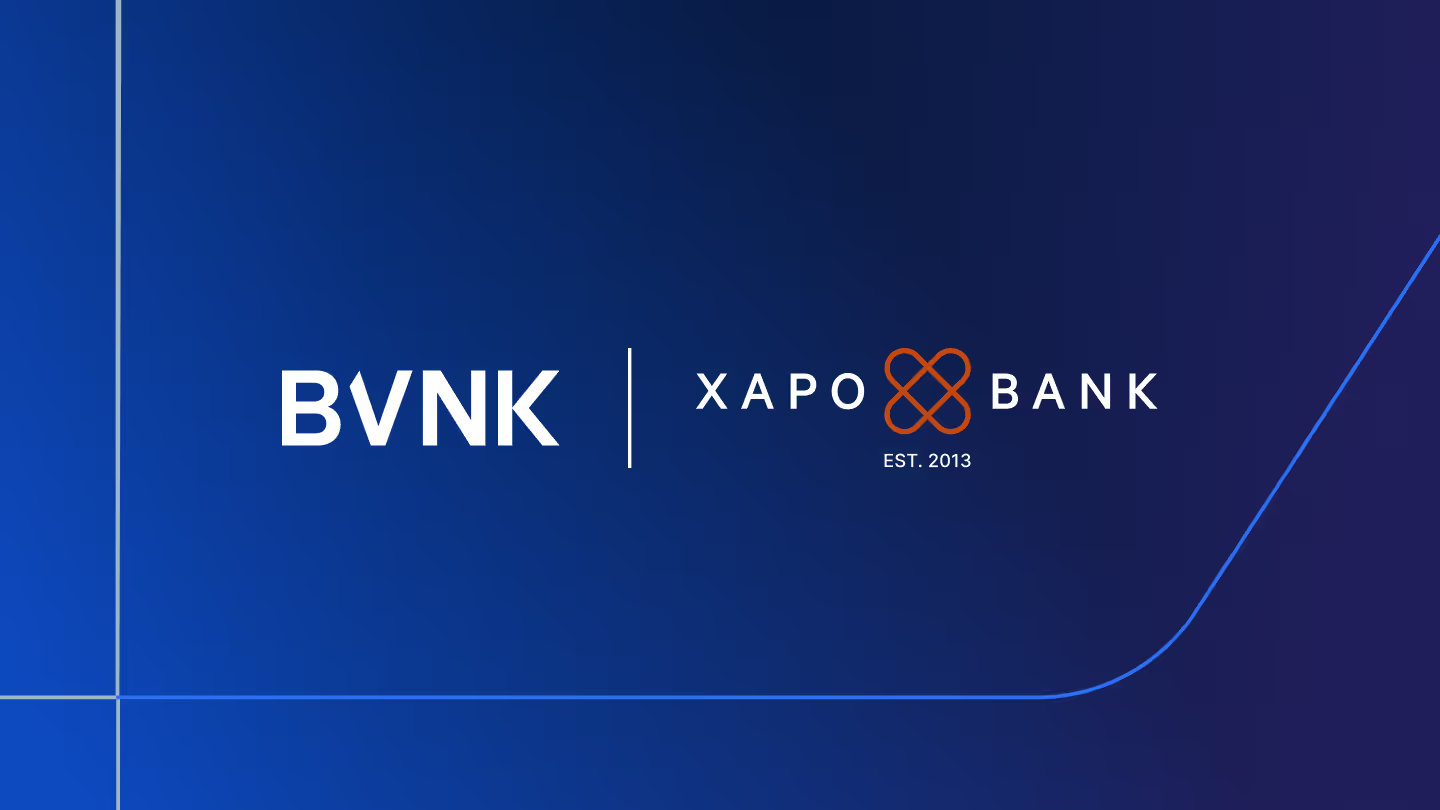Who or what will own the cross-border payment rails of the future?
The race is on for the £290 trillion cross-border payments market. BVNK Co-Founder Chris Harmse spoke to dLocal, Wise, Airwallex and Dapio to weigh up the contenders.
As businesses expand to new markets and consumers move around the world, the market for cross-border payments keeps growing and is predicted to reach $290 trillion by 2030.
Behind the scenes, decades-old incumbents like Swift are now joined by a generation of young fintech innovators and a new wave of blockchain challengers. But who or what will end up on top?
I spoke to cross-border payments gurus at Wise, Airwallex, Dapio and dLocal to debate what the payment rails of the future will look like. Here’s what they said.
Register for free to access the full debate on demand, from Currency LDN 2023.
Swift: slow but trusted
If you’re doing business across borders, the chances are you’re using Swift, a correspondent banking network that connects more than 11,000 financial institutions around the world.
Swift is the trusted incumbent, but it relies on a complex chain of intermediaries, which can mean high costs and slow settlement times. So, will Swift still be with us in 10 year’s time?
Yes, for the foreseeable future, said James Butland, VP of Financial Partnerships at Airwallex: “There’s still a place for Swift… a lot of people still trust Swift over a new fintech.”
Anything trying to displace Swift will need to prove itself in three ways, he added: speed, transparency and cost: “If you can address those then there's a real opportunity to bring in that new level of infrastructure.”
William Lorrenz, Chief Operating Officer at Dapio argued that Swift is likely to evolve: “I see the current infrastructure players like Swift with that deep, decades of experience morphing and adapting," he said, going head to head "with new rails like stablecoins.”
Arun Tharmarajah, Head of European Banking & Payments at Wise, said that competition is a good thing. “Swift has made progress in recent years… I think DLT has given it a bit of a kick… it's a race now. Will the banks and the legacy infrastructures catch up or will something else, a group of people or companies figure out how to do it?”
The fintech factor: elegant customer experiences

In the last decade, we’ve seen fintechs like Airwallex, Wise and Remitly emerge as serious contenders in cross-border payments by successfully solving customer problems.
As Arun Tharmarajah put it: “customers just want to send money around the world quickly… All a payment really is, is data. When you send an email, you don't get charged more going from Yahoo to Gmail versus Gmail to AOL, so why is a cross-border payment any more complicated?”
The problem is 30-year-old legacy banking infrastructure. Fintechs like Airwallex and Wise have done a great job of upgrading the user interface on these old rails in recent years. They’ve also simulated ‘instant’ experiences for consumers, by skilfully managing liquidity on the back end.
Arun explained: “At Wise, we look at the data at an insanely detailed level… Not just what day do we need the right money, but what minute of the day do we need it.”
Forecasting and pre-funding gets you so far, but, as Arun pointed out: “until we get real 24/7 cross border rails, we're always going to have a dependency on modelling.”
In the current economic market with high interest rates, pre-funding can be expensive for providers too, said James: “If you're just doing payouts in a country, not collecting money, you could have that liquidity trap where you need to either top up or withdraw money… which could be a problem as money gets more expensive over the next couple of years.”
Connecting local schemes: the fast-track
Some national regulators have taken the cross-border payment problem into their own hands. In March 2023, Singapore and India connected their local payment schemes, UPI and PayNow.
It’s a good example of two regulators coming together to solve a problem, said James Butland: “There is a big Indian expat community in Singapore… here are two regulators thinking about a problem and doing what the underlying individuals want. We'd love to see more of that in Southeast Asia and other parts of the world… if these corridors open up, then our job as a fintech really becomes a UX layer – helping people to manage their money, expense management, cards, acquiring… but actually moving the money – the more efficient that can be, the better for all of us.”
Distributed ledger technology: strong in emerging markets

Elsewhere, demand is growing for distributed ledger technology (DLT) as an alternative set of cross-border payment rails.
In many markets, DLT payments can help global businesses to ease liquidity and avoid expensive pre-funding that results from slow Swift settlements.
Payment services provider dLocal for example uses DLT in emerging markets. Chief Revenue Officer John O’Brien explained: “We recently had to go through with Amazon that we were going to use DLT in some markets and get them comfortable. It took some time, but they got comfortable with it as a mechanism to take the money out. So, we’re seeing bigger companies see the reality of operating in markets like these… And we’re seeing more requests for DLT and a higher level of comfortability, notwithstanding the recent bad actors in the space.”
Cryptocurrency can also be an attractive option for consumer payouts in markets where local currencies are volatile, said John: “In places like Argentina, people already say: ‘I'd prefer to take Bitcoin as a payment’ because it’s more stable versus their own currency…. so we see a lot of appetite in those markets for cryptocurrencies as a store of value.”
But what will it take for cryptocurrencies to become a mainstream payment method? Natural migration will likely play a role.
“A lot of the remittance companies have grown because people from emerging markets are moving around and sending money back,” said John. “If DLT can prove itself in some of these markets, then as these folks naturally migrate to larger, more classically developed economies, that's where these solutions will have to come into play… we've all been in Harrods and seen Alipay now. That wasn't the case 15 years ago.”
Visa and Mastercard: the shapeshifters
Where do big players like Visa, Mastercard and Amex feature in the future of cross-border payments?
They’ll continue to be relevant, said John O’Brien: “Their general M&A strategy is to buy up everyone who's not a card company, or has another rail... I think they'll continue to invest in this space and hopefully that'll drive further adoption of technologies like DLT… their strategic approach should help create more companies to drive innovation and competition.”
Visa and Mastercard have proven they’re adaptable, added John: “I went to a meeting with Visa with the team from Coinbase in 2017, and they were telling us what they were doing was illegal… now they have a head of crypto and a team of about 200 around the world, and they’re starting testing Ethereum as a settlement layer too.”

Governments: looking out for national interests
The role of governments can’t be underestimated. For payments to be truly borderless, national incentives need to align.
In the markets where dLocal operates, government intervention tends to push in one of two ways, John O'Brien explained:
“One for digitisation. In Brazil's case for example, the Government thinks this is better for the tracking of taxation... while you see other countries saying 'we have to continue to institute cash in the market, because people have to be able to pay'.”
Arun Tharmarajah agreed: “Governments and central banks will always think domestically. They're not incentivised to try and fix on a cross-border basis... I think the winners will be the people, groups of people, companies, that accept that and, say: how can we work around these very nationalistic constraints?”
The future is multi-rail
In the next 10 years, there’s unlikely to be a single winner in cross-border payments. The market is growing and there’s space for multiple rails which cater for different use cases, preferences and tolerances for risk, cost and speed.
As William Lorrenz said: “On the B2B side, we'll probably end up with islands focused around the trading blocks. There are obviously a few fiat attempts on that and we'll probably get the more advanced technical DLT version of that too.”
Or, as Arun Tharmarajah put it, the future will be about choice: “There's probably going to be a future where you can pay X and move your money instantly using one of these networks, or you can pay a little bit less and wait five minutes, two days… consumers and businesses around the world are all very different, so to try and narrow everything down to one network, one use case, one commercial model is quite hard to do and not really realistic in terms of what people want.”
This article covers themes and data shared at Currency LDN 2023. Register for free to access the talk in full.
Latest news
View allGet payment insights straight to your inbox



.jpg)






.avif)


.jpg)





